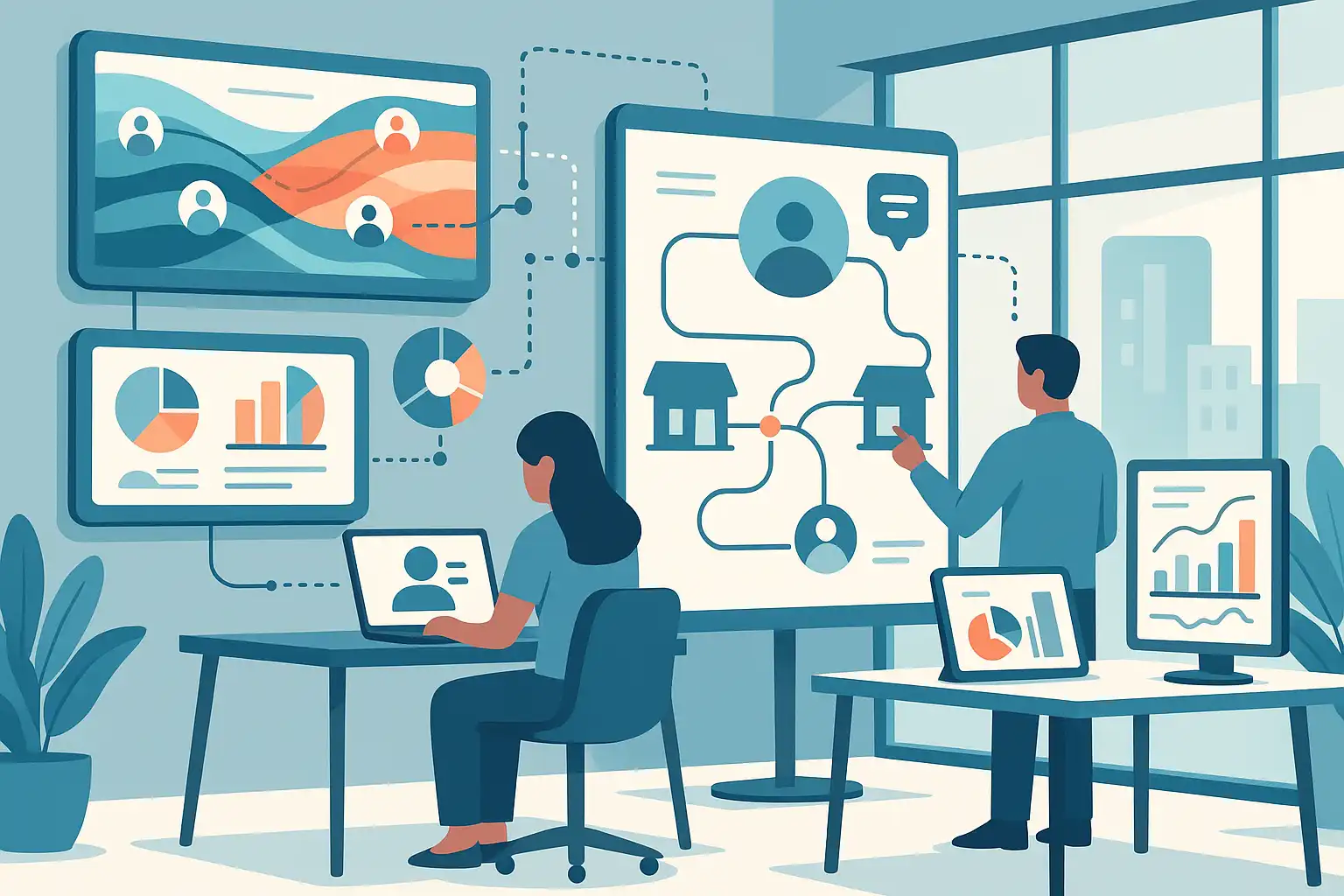
If you’re looking to understand what drives your customers’ choices in today’s fast-changing service landscape, customer behavior analysis service industry insights are essential. Customer behavior analysis helps businesses in hospitality, healthcare, retail, and more, find out what makes their clients tick. This data-driven approach guides decisions, improves services, and strengthens customer relationships—all from the very start.
The core of customer behavior analysis in the service industry is understanding the reasons behind customer actions. Companies analyze data on what customers buy, how they interact online and offline, and what feedback they give. With these insights, businesses can tailor their offerings, improve the customer journey, and stay a step ahead of competitors. As a result, service providers can increase satisfaction, loyalty, and revenue.
What methods are used to analyze customer behavior in the service industry?
Service companies use a mix of quantitative and qualitative methods to study customer behaviors. Quantitative methods focus on hard numbers, such as purchase history, web analytics, and service usage statistics. These methods help identify larger patterns and trends across many customers.
Qualitative techniques dig deeper into the why behind customer actions. This might include interviews, feedback forms, and open-ended surveys. These methods reveal customer motivations and preferences that aren’t always clear from numbers alone.
Step-by-Step Approach
- Segmenting Customers: Identify different groups based on demographics, behaviors, or preferences.
- Gathering Data: Collect data from digital platforms, in-person interactions, and direct feedback.
- Analyzing Information: Use frameworks from psychology, buying behavior, and analytics tools to draw insights.
- Applying the Findings: Adjust touchpoints like marketing, support, and product offers to better meet customer needs.
Often, companies will use advanced analytics platforms for data processing, visualization, and reporting. Well-known platforms like Salesforce and Tableau support service industry customer data insights, while others focus on sentiment analysis or customer journey mapping.

How do trends and industry insights shape customer behavior analysis strategies?
Trends in the service industry influence how businesses approach customer analysis. As technology evolves, new tools allow for more precise tracking and prediction of customer behaviors. For example, AI-powered chatbots, online review mining, and automated survey tools provide richer and faster feedback than ever before.
Keeping up with industry insights helps businesses identify changes in how customers expect to be treated. For instance, the rise of personalization has led companies to use customer behavior analysis service industry techniques to offer custom deals or tailored recommendations. Digital self-service, sustainable practices, and omnichannel experiences are also reshaping what customers demand—and how businesses respond.
Emerging Trends in Customer Behavior Analysis
- Personalization: Businesses are mapping out every step along the customer journey to deliver more relevant offers and communications.
- Real-Time Feedback: Immediate responses to customer actions create better engagement and resolve issues faster.
- Predictive Analytics: Advanced models forecast what customers are likely to do next, helping companies act before needs arise.
- Omnichannel Data Integration: Bringing together online, mobile, and offline data offers a full picture of customer interactions.
- Data Privacy: As regulations tighten, companies must ensure that customer data is handled transparently and securely.
By recognizing these trends, businesses can continually refine their strategies to match what customers expect today and in the future. For example, if you want to ensure your organization’s analytics approach stays ahead, reviewing customer behavior analysis best practices may help benchmark your processes for effectiveness.
Why is customer behavior analysis important for service industry businesses?
Understanding customer behavior gives businesses a competitive edge. It allows for smarter decisions, better service, and stronger loyalty. When companies analyze customer data, they can:
- Identify what drives repeat visits and purchases
- Spot pain points in the service journey and resolve them
- Develop more targeted marketing campaigns
- Build new service offerings that truly match customer needs
- Increase efficiency by focusing efforts where they matter most
For instance, a hotel might use customer behavior analysis to see that guests value speedy check-in and personalized amenities. As a result, the hotel can streamline onboarding and suggest add-ons that boost guest satisfaction. In the healthcare sector, analyzing appointment trends and patient feedback helps clinics optimize wait times and communication.
Benefits include:
- Improved customer retention and loyalty
- Increased upsell and cross-sell opportunities
- Reduced churn
- Greater revenue over time
Challenges Faced by Service Businesses
While there are many benefits, some challenges come with analyzing customer behavior. Collecting high-quality, relevant data can be tough, especially for smaller businesses with limited resources. Privacy concerns also require careful attention, as customers want to know their information is used responsibly. Additionally, turning raw data into meaningful, actionable insights may need specialized skills or software.
Yet, with the right approach, even smaller service firms can benefit. There are many affordable tools and agencies that help with qualitative and quantitative customer analysis service needs.

What are some best practices for optimizing the customer journey?
Optimizing the customer journey in services involves constantly refining each step a customer takes, from first contact to ongoing care. Companies should regularly review their processes and adapt based on customer feedback and behavior data.
- Map the Journey: Outline every interaction point, online and offline, to spot opportunities for improvement.
- Listen and Respond: Collect customer feedback after key moments and act on it promptly.
- Personalize When Possible: Use customer insights to tailor communications, offers, and support experiences.
- Align Teams: Make sure marketing, sales, and support teams share customer information for a unified approach.
- Measure Success: Track customer satisfaction, loyalty scores, and retention rates to see if changes work.
In practice, restaurants might adjust menus or promotions based on seasonal feedback, while financial service firms could tweak their digital onboarding flow for clarity. If your organization’s focus is aligning analytics and operations, exploring topics like data strategy alignment with business goals can inspire effective cross-department collaboration.
Recommended Tools
- CRM platforms (Salesforce, HubSpot)
- Survey and feedback tools (SurveyMonkey, Qualtrics)
- Web analytics (Google Analytics, Hotjar)
- Customer journey mapping software (Smaply, UXPressia)
- Sentiment analysis tools for reviews and social media
FAQ
- What’s the difference between quantitative and qualitative analysis in the service industry?
- Quantitative analysis focuses on measurable data, like sales numbers and website traffic. Qualitative analysis looks at customer opinions, preferences, and motivations through interviews and open-ended feedback. Both methods are important for a well-rounded view of customer behavior.
- How often should service businesses review their customer behavior data?
- Ideally, businesses should monitor data regularly—monthly or quarterly. Frequent reviews help companies stay alert to changing trends and respond quickly to customer needs.
- Can small businesses benefit from customer behavior analysis?
- Yes. Even with limited data, small businesses can gather feedback, track trends, and make improvements that boost customer satisfaction and retention.
- Is it necessary to use specialized software for customer behavior analysis?
- While not required, specialized tools make analyzing and acting on customer data easier and more effective, especially as businesses grow.
